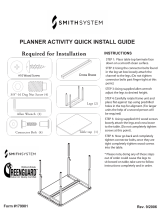
Safety
10
GB
After SAleS Support
10
IRE
0044 151 649 1500
0044 1890 946 244
GB
IRE
d) Do not use the cord for purposes other than the intended
one such as for carrying the power tool, hanging it up or
pulling the plug out of the socket. Keep the cord away from
heat, oil, sharp edges or moving parts of the device. A dam-
aged or wound up cable increases the risk of an electric shock.
e) If you are working with a power tool outdoors, only use ex-
tension cords that are also suitable for outdoor use. The use
of an extension cord suitable for outdoor application reduces the
risk of electrical shock.
f) If operating the power tool outdoors cannot be avoided,
use a fault-current circuit breaker. Using a fault-current circuit
breaker reduces the risk of an electric shock.
g) Do not operate the power tool in a wet or damp environ-
ment. Never expose it to rain. Working in a wet and damp en-
vironment increases the risk of electric shock and generally in-
creases the risk of injury.
3. Safety of persons
a) Be careful, pay attention to what you are doing and ap-
proach work with a power tool in a reasonable manner. Do
not use any power tool if you are tired or under the influence
of drugs, alcohol or medication. A single moment of inatten-
tiveness when using the power tool can result in serious injury.
b) Wear personal protective gear and always wear protective
goggles. Depending on the type of power tool and how it is
used, wearing personal protective gear such as a dust mask,
non-slip safety shoes, a protective helmet or ear protection re-
duces the risk of injury. If you have long hair, wear a hair net. Use
a breathing mask if performing dusty work.
c) Avoid accidentally activating the device. Make sure that the
power tool is turned off before you connect it to the power
supply, connect the rechargeable battery, pick it up or carry it.
If you have your finger on the switch when carrying the power tool
or connect the device to the power supply when it is turned on, this
may cause an accident.





















